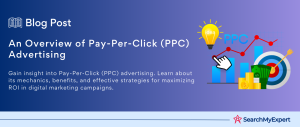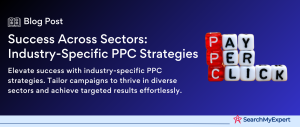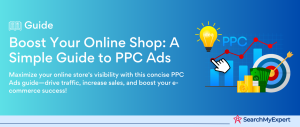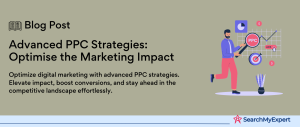Automated PPC Management: Revolutionizing Digital Advertising
In today’s fast-paced digital world, Pay-Per-Click (PPC) advertising has become a cornerstone of online marketing strategies. Amidst this evolution, Automated PPC Management has emerged as a game-changer, offering businesses a way to optimize their advertising efforts efficiently. This introduction delves into what automated PPC management is, its benefits, and the challenges it presents.
Defining Automated PPC Management
Automated PPC management involves using technology to automate aspects of PPC campaign management. This technology typically leverages artificial intelligence (AI) and machine learning algorithms to analyze data, make decisions, and execute tasks related to PPC campaigns. These tasks can include keyword bidding, ad placement, and performance analysis. By automating these processes, businesses can focus on strategy and creativity, leaving the technical details to sophisticated algorithms.
Benefits of Automated PPC Management
Automated PPC management offers several benefits:
- Efficiency and Time Savings:
Automation significantly reduces the time spent on manual campaign management tasks. - Improved Performance:
AI algorithms can analyze vast amounts of data, making informed decisions that optimize campaign performance. - Scalability: Automated systems can manage large-scale campaigns effortlessly, enabling businesses to scale their advertising efforts.
- Data-Driven Decisions: With access to real-time data, automated systems make informed, objective decisions that enhance campaign effectiveness.
- Reduced Human Error:
Automating repetitive tasks minimizes the likelihood of human error, ensuring more consistent campaign management.
Challenges in Automated PPC Management
Despite its benefits, automated PPC management is not without challenges:
- Complexity of Setup: Implementing an automated system can be complex and requires a thorough understanding of PPC dynamics.
- Over-Reliance on Technology: Excessive reliance on automation can lead to a lack of human oversight, which is crucial for creative and strategic decision-making.
- Data Privacy Concerns: As automation involves handling vast amounts of data, maintaining data privacy and security becomes a significant concern.
- Keeping Up with Evolving Algorithms: Automated systems are continually evolving, requiring businesses to stay updated with the latest technologies and trends.
- Balancing Automation and Human Insight:
Finding the right balance between automated efficiency and human creativity is essential for successful PPC management.
Understanding Automated PPC Platforms
Automated PPC platforms are pivotal in transforming how businesses approach digital advertising. These platforms harness the power of automation and AI to streamline PPC campaign management, offering innovative features and functionalities. This section provides an overview of these platforms, their key features, and the criteria for selecting the most suitable platform for your needs.
Overview of Popular Automated PPC Platforms
Several platforms have risen to prominence in the realm of automated PPC management. Each offers unique features and caters to different aspects of PPC campaign management. Here are a few notable ones:
- Google Ads: Google’s own platform offers extensive automation features, including Smart Bidding and responsive ads.
- Microsoft Advertising: Known for its integration with LinkedIn, this platform provides unique audience targeting options.
- AdRoll: Specializing in retargeting, AdRoll offers cross-platform advertising solutions.
- Kenshoo: A comprehensive platform that provides automation tools for search, social, and e-commerce advertising.
Key Features and Functionalities
Automated PPC platforms offer a range of features that make managing PPC campaigns more efficient and effective:
- Automated Bidding:
Tools for optimizing bids in real-time based on various factors like conversion rates and keyword performance. - Dynamic Ad Creation: Capabilities for creating ads automatically using AI, which can adapt to audience preferences and behaviors.
- Performance Analytics:
Advanced analytics tools for tracking and analyzing campaign performance to inform decision-making. - Cross-Platform Campaign Management: Features that enable the management of campaigns across multiple platforms from a single interface.
- Machine Learning Insights:
Utilization of machine learning to provide insights and recommendations for campaign optimization.
Evaluation Criteria for Selecting an Automated PPC Platform
Choosing the right automated PPC platform requires careful consideration of several factors:
- Compatibility with Business Goals:
The platform should align with your specific marketing objectives and target audience. - Ease of Use:
A user-friendly interface is crucial for efficient campaign management, especially for teams with varying skill levels. - Integration Capabilities:
The platform should seamlessly integrate with other tools and systems in use, like CRM software or analytics tools. - Customer Support and Training: Reliable customer support and training resources are vital for navigating complex platforms and features.
- Budget and ROI: Consideration of the platform’s cost relative to the expected return on investment and the budget constraints of your business.
Setting Up Automated PPC Campaigns
Setting up an automated PPC campaign requires a strategic approach, focusing on clear goals, understanding your target audience, and determining budgetary constraints. This section guides you through these essential steps, ensuring a solid foundation for your automated PPC efforts.
Defining Campaign Goals and Objectives
Before diving into automation, it’s crucial to define what you want to achieve with your PPC campaign:
- Increase Brand Awareness:
Targeting a broader audience to enhance visibility. - Drive Traffic: Focusing on attracting visitors to your website or landing page.
- Generate Leads:
Capturing information from prospects interested in your products or services. - Boost Sales: Directly driving sales through targeted advertising.
Each goal requires different strategies and metrics for success, shaping the direction of your automated campaign.
Identifying Target Audience and Keywords
A thorough understanding of your audience and keywords is vital:
- Audience Research: Identify the demographics, interests, and online behaviors of your potential customers.
- Keyword Selection:
Choose relevant keywords that your target audience uses in their search queries. Tools like Google Keyword Planner can assist in this process. - Segmentation: Segment your audience for more targeted advertising. This could be based on location, age, interests, or previous interactions with your brand.
Setting Campaign Budgets and Bidding Strategies
Budgeting and bidding are critical components of PPC campaign management:
- Budget Allocation: Determine how much you’re willing to spend on your campaign. This should align with your marketing budget and the expected return on investment (ROI).
- Bidding Strategies:
Decide on a bidding strategy that aligns with your campaign goals. Options include cost-per-click (CPC), cost-per-impression (CPM), or cost-per-acquisition (CPA). - Use of Automated Bidding:
Many platforms offer automated bidding strategies that adjust bids in real-time based on the likelihood of achieving the desired outcome.
Automating Keyword Bidding Strategies
Automating keyword bidding strategies is a critical component of modern PPC campaigns. This section explores the nuances of manual versus automated bidding, different types of automated strategies, and how to optimize them for maximum performance.
Manual vs. Automated Bidding Strategies
Understanding the contrast between manual and automated bidding is crucial:
- Manual Bidding: Involves setting bids for individual keywords or ad groups based on personal analysis and predictions. While it offers control, it can be time-consuming and less responsive to real-time market changes.
- Automated Bidding:
Utilizes algorithms to adjust bids in real-time based on various factors like search context, user behavior, and campaign performance. It’s efficient and data-driven but requires trust in the system’s algorithms.
Types of Automated Bidding Strategies
Automated bidding strategies can be broadly categorized into two types:
- Rule-Based Bidding: These strategies use predefined rules set by the advertiser. For example, increasing bids during specific hours of the day or when certain performance criteria are met.
- Machine Learning-Based Bidding:
This approach leverages machine learning algorithms to analyze vast amounts of data and continuously optimize bidding strategies for the best possible outcomes.
Each type has its strengths, and the choice depends on the specific needs and complexity of your campaign.
Optimizing Automated Bidding Strategies for Performance
To maximize the effectiveness of automated bidding strategies, consider the following:
- Continuous Monitoring:
Regularly review the performance of your bidding strategy. Adjust rules and parameters as needed based on campaign performance data. - Data-Driven Adjustments: Use analytics and reporting tools to understand how different bidding strategies impact your campaign goals. Make data-informed decisions to refine your approach.
- Testing and Learning: Experiment with different strategies and settings. A/B testing can be particularly useful in understanding what works best for your campaign.
- Integration with Campaign Goals: Ensure that your bidding strategy aligns with your overall campaign goals, whether it’s driving traffic, generating leads, or boosting conversions.
Automating Ad Creation and Optimization
Streamlining Advertisements for Maximum Impact
Automated ad creation and optimization represent a significant leap forward in PPC management, allowing for more dynamic, responsive, and effective advertising. This section focuses on the mechanisms of dynamic keyword insertion, data-driven ad optimization techniques, and continuous ad performance monitoring.
Dynamic Keyword Insertion (DKI) and Automated Ad Creation
Dynamic Keyword Insertion is a pivotal feature in automated ad creation:
- How DKI Works: DKI automatically updates the ad text to include the search query of the user. This customization increases the relevance of the ad to the searcher, potentially improving click-through rates (CTRs).
- Benefits of DKI:
Ads become more targeted and relevant to the audience, leading to higher engagement and better campaign performance. - Implementing DKI: Careful implementation is necessary to ensure that the ads remain coherent and contextually appropriate, regardless of the search query.
A/B Testing and Data-Driven Ad Optimization
Data-driven approaches are essential for refining ad strategies:
- A/B Testing:
Running simultaneous campaigns with slight variations (like different headlines or call-to-actions) to determine which version performs better. - Analyzing Results: Use analytics tools to measure the performance of each ad variation. Key metrics include CTR, conversion rate, and cost per conversion.
- Iterative Optimization: Continuously refine ads based on A/B testing results. This iterative process leads to increasingly effective advertisements.
Ad Performance Monitoring and Refinement
Ongoing monitoring and refinement are crucial for sustaining ad performance:
- Real-Time Monitoring:
Use automated tools to track ad performance in real time. This includes monitoring metrics like CTR, impressions, and conversion rates. - Adaptation and Adjustment: Be prepared to make quick adjustments based on performance data. This might involve changing ad copy, adjusting targeting settings, or reallocating the budget.
- Long-Term Strategy: Regularly review the overall performance and adapt your long-term ad strategy accordingly. This ensures your ads remain effective and aligned with evolving market trends and consumer behaviors.
Automating Campaign Monitoring and Reporting
Mastering the Art of PPC Campaign Analytics
Automating campaign monitoring and reporting is an essential aspect of modern PPC management. This step involves tracking key performance indicators (KPIs), utilizing real-time performance data, and generating insightful reports. It’s about transforming data into actionable insights to continuously refine and enhance your PPC campaigns.
Key Performance Indicators (KPIs) for Automated PPC Campaigns
Selecting the right KPIs is crucial for effective campaign analysis:
- Click-Through Rate (CTR):
Measures the effectiveness of your ads in terms of attracting clicks. - Conversion Rate: Tracks the percentage of clicks that result in a desired action, such as a purchase or sign-up.
- Cost Per Click (CPC):
Monitors the cost incurred for each click on your ads. - Return on Ad Spend (ROAS):
Assesses the profitability of your PPC campaigns. - Quality Score: A metric used by platforms like Google Ads to rate the quality and relevance of your keywords and ads.
These KPIs provide a comprehensive overview of your campaign’s performance, guiding future optimizations.
Real-Time Campaign Monitoring and Performance Tracking
Continuous monitoring is a key benefit of automation:
- Real-Time Data Access: Automated tools provide up-to-the-minute data, allowing for prompt responses to changing campaign dynamics.
- Alerts and Notifications: Set up alerts for significant changes or milestones in campaign performance to stay informed and react swiftly.
- Trend Analysis: Use real-time data to identify trends and patterns, informing strategic decisions and adjustments.
Generating Comprehensive Reports and Insights
Reporting is more than just data compilation; it’s about extracting insights:
- Customizable Reports: Create reports tailored to specific needs and audiences, focusing on the most relevant KPIs and data points.
- Visual Data Representation: Use charts, graphs, and other visual tools to make data more understandable and actionable.
- Insightful Analysis:
Go beyond numbers to provide insights and recommendations based on the data. This could involve identifying successful strategies, areas for improvement, or market opportunities.
Measuring Success and Making Adjustments
Refining Automated PPC Campaigns for Long-Term Success
The final step in managing automated PPC campaigns is evaluating their success against set goals and objectives, identifying areas for improvement, and making necessary adjustments for ongoing optimization. This process is crucial for ensuring that your PPC efforts are not just a one-time success but continue to deliver results over time.
Evaluating Campaign Performance Against Goals and Objectives
The effectiveness of a PPC campaign is measured by how well it meets its initial goals:
- Comparative Analysis: Compare current campaign performance with initial objectives. This includes assessing metrics like conversion rates, ROAS, and overall engagement.
- Benchmarking: Use industry benchmarks to gauge the performance of your campaign against similar efforts in your sector.
Identifying Areas for Improvement and Making Necessary Adjustments
Continuous improvement is key to PPC success:
- Performance Weak Spots: Identify areas where the campaign is underperforming. This could involve certain keywords, ad copy, or target demographics.
- Iterative Adjustments: Implement changes in a controlled, iterative manner. This allows for the assessment of each change’s impact on overall performance.
- Adapting to Market Changes: Stay attuned to market trends and consumer behaviors, adjusting your strategies to remain relevant and effective.
Continuously Optimizing Automated PPC Campaigns for Long-Term Success
Sustained optimization ensures enduring campaign success:
- Long-Term Data Analysis: Look beyond short-term metrics to understand long-term trends and patterns.
- Ongoing Testing and Learning:
Continually test new strategies, keywords, and ad formats to discover what works best. - Leveraging Automation Innovations: Stay updated with the latest advancements in PPC automation to enhance campaign efficiency and effectiveness.
Conclusion
Measuring success and making adjustments in automated PPC campaigns is an ongoing process. It involves a consistent evaluation against goals, identification of improvement areas, and the implementation of strategic adjustments. This cycle of assessment and optimization is vital for ensuring the long-term success and relevance of your PPC efforts.
Skyrocket your sales with the strategy of our PPC Agencies.
Table of Contents
Toggle






